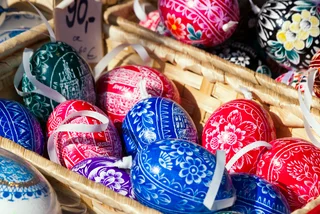Only two northern white rhinos are left in the world, but there is hope the species will survive. Najin and Fatu, both females, were born at the Czech Republic’s Safari Park Dvůr Králové but are now at a nature park in Kenya under round-the-clock guard. No males are known to exist.
To save the species, conservationists are turning to in vitro fertilization (IVF) and surrogate mothers from a different species. Kenya's Ol Pejeta Conservancy yesterday announced that the BioRescue Project team now has two more successfully fertilized embryos, bringing the total 14.
The conservancy and Safari Park Dvůr Králové are working together with Leibniz Institute for Zoo and Wildlife Research, Kenya Wildlife Service, Wildlife Research and Training Institute, biotech firm Avantea, and Padua University. They describe their efforts as a “race against time to prevent the extinction of the northern white rhinoceros.” Safari Park Dvůr Králové still owns both rhinos but moved them to the conservancy in 2009.
Najin, the older of the two female rhinos, has retired from the rescue program, so eggs are now only harvested from Fatu. Samples of DNA from the last male northern white rhinos were taken previously and have been stored.
Sudan, the last male, had to be euthanized at Ol Pejeta in 2018 due to chronic infections. The other male from Dvůr Králové to be sent to Ol Pejeta, Suni, died of natural causes in October 2014.
The next-to-last male, Angalifu, passed away in December 2014 of old age in San DIego, California. Angalifu was caught in the wild in Sudan in 1973. He had been a resident of the San Diego Wild Animal Park since 1990. The San Diego Wild Animal Park donated a sperm sample to the rescue project.
“Since we last updated you following Najins retirement from the program, the BioRescue Project team has conducted TWO egg collection procedures from Fatu. The two procedures mark the seventh and eighth successful oocyte collections conducted by the team of scientists and conservationists,” Ol Pejeta announced on Facebook.
“We now have 11 embryos from Fatu and Suni, another male who lived on Ol Pejeta until his death in 2014, and three from Fatu and Angalifu. Embryos developed from different/unrelated males provide diversity to the gene pool and help to create a viable population. The embryos are currently stored in liquid nitrogen before being transferred into southern white rhino surrogates in the foreseeable future,” they added.
In the eight procedures since 2019, the team retrieved a total of 119 oocytes (egg cells) from Fatu and her mother Nájin. The successfully fertilized embryos, though, all come from Fatu. The BioRescue team decided to cease egg harvesting on Najin following an ethical risk assessment in 2021.

The recently harvested eggs were airlifted to Avantea laboratory in Cremona, Italy, for maturation, fertilization, embryo development, and cryo-preservation. Both recent embryos were produced using semen from northern white rhino bull Angalifu.
“A greater number of embryos increase the chances of having a northern white rhino calf on the ground,” Ol Pejeta Conservancy said in a press release.
“The consortium aims to repeat oocyte collection from Fatu and embryo development on a regular basis, as long as it is feasible and responsible considering Fatu’s welfare and the chances of success. This will be determined by regular ethical risk assessments,” they added.

Ol Pejeta Conservancy is a 90,000-acre wildlife nature area. It provides a sanctuary for great apes, and generates income through wildlife tourism and related projects. Aside from being home to the last two northern white rhinos, it is the largest black rhino sanctuary in East Africa and is the only place in Kenya to see chimpanzees.
In December 2009, Safari Park Dvůr Králové, then known as Dvůr Králové Zoo, relocated two male and two female northern white rhinos to the Ol Pejeta Conservancy, hoping that breeding would be more successful in the natural habitat. But no rhinos were born.
A fifth rhino, a female named Nabire, stayed in Dvůr Králové, but passed away in 2015. Some of her eggs were harvested but due to a misunderstanding were fertilized with sperm from a southern white rhino.
In 1975, the Dvůr Králové Zoo acquired six northern white rhinos from Sudan and, later, two more from English zoos, including one that arrived pregnant. The zoo is the only one in the world where northern white rhinos have given birth. Six northern white rhinos were born in the zoo between 1977 and 2000.
The San Diego Zoo Safari Park in the United States also had northern white rhinos, but the last one passed away in 2015.












 Reading time: 3 minutes
Reading time: 3 minutes 





























